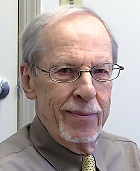There’s Good News About Aging

Recent research indicates a startling and counterintuitive truth: Older age is one of the happiest periods of life. Happiness has been studied in many countries, and the bottom line is this: Happiness demonstrates a U-shaped curve over the life span. People are happy in their younger years, considerably less so in middle age, and progressively more so as they grow older.
Happiness in the youth and elderly populations is driven by different factors. Younger people seem to thrive on excitement and novelty, which help build a sense of identity. Given their ubiquity, it would stand to reason that these youthful pursuits of the exciting may be biologically and genetically based. Older individuals, in contrast, find happiness not in excitement but in smaller joys nearer to home: family, friends, and hobbies.
Judging from my patients, I would confirm these observations. Allegheny County, Pa., where I practice, has the second largest number of elderly in the country. I treat a number of these people and have been impressed by them. Even as they cope with emotional symptoms, many elderly in Allegheny County are still living in their homes; they are self-sufficient, optimistic in their 70s and 80s, and surprisingly youthful. Many are golfing, vacationing at the shore, visiting friends and family, caring for grandchildren, and pursuing hobbies. Moreover, these elderly are not wealthy—they are very much in the middle class.
Older individuals have generally established their identities, have no more need to prove themselves, and are benefiting from years of accumulated experience and wisdom.
But how can we square these U-shaped data with the many physical ailments that seem to accumulate in older age? Who can be happy in the face of arthritis, diabetes, cardiovascular disease, cancer, or combinations of these? And why is it that many elderly, unlike the younger set of “happy” cohorts, seem not especially afraid of dying, despite being closer to their end?
Every chronic malady produces physical symptoms of one sort or another. Pain, difficulty breathing, unsteady gait, and fatigue are examples. Every chronic symptom results in some loss of prior activities or functionality. Arthritis of the hip or knees makes it difficult to walk, let alone run; of the hands, one is limited in playing piano or knitting. Visual or hearing problems limit the individual’s radius of activities. Pulmonary disease leaves one breathless and too fatigued to do much of anything physical. In many cases, independence itself is significantly compromised.
People, elderly included, undergo a natural, subtle grieving process over the loss of function caused by their illnesses. Close attention to conversation among older individuals finds it rapidly turning to their new symptoms and how they cannot do what they could in the past. There is often much laughter in the group, even as they are discussing their maladies, not unlike what one sees routinely, though more intensely, in a Catholic wake or Jewish shiva. These discussions and processes represent mini-bereavements in action.
Grieving may sound negative, but it is a biological, and therefore universal, process whose effects are positive and help resolve the paradox of the U-shaped curve. First and foremost, the older person who has successfully allowed him- or herself to go through the full grieving process comes out more accepting of the loss of functions rather than emotionally paralyzed by it. This is no small gift, as I have interviewed a number of elderly who have gotten stuck in their grief and consequently spent much of their emotional life in deep sadness, regret, and depression.
Another positive outcome is the development of a new sense of self. Having lost some skills that previously defined their “self” (for example, tennis, crocheting, running, piano), older individuals often develop new skills more aligned with their residual abilities. They might attend courses, study a new language, draw closer to children and grandchildren, or take up swimming. Often, older people tend to see life in radically different ways that they had not previously entertained.
Finally, having grieved the loss of multiple parts of their lives, seniors have become more accepting of the end of life. Death is less fraught with the fears that terrified many of us in our youth. It may appear unseemly to derive good news from comfort with death, but good news it is: Would you not rather go calmly, with contentment and acceptance, into that dark night than go there kicking and screaming? Would you not rather feel a sense of completion of your life’s tasks and goals than feel your end is premature and you are being cheated out of time rightfully yours?
I recognize that not everyone benefits from the “silver linings” of older age. Such individuals may have been blocked in their ability to go through the many small grief processes appropriately and might benefit by seeking the aid of a therapist to help them negotiate this process and find peace. But for many older individuals, Mother Nature has provided us a happier older age and a natural mechanism to ease us into a more comfortable parting with our world. ■



